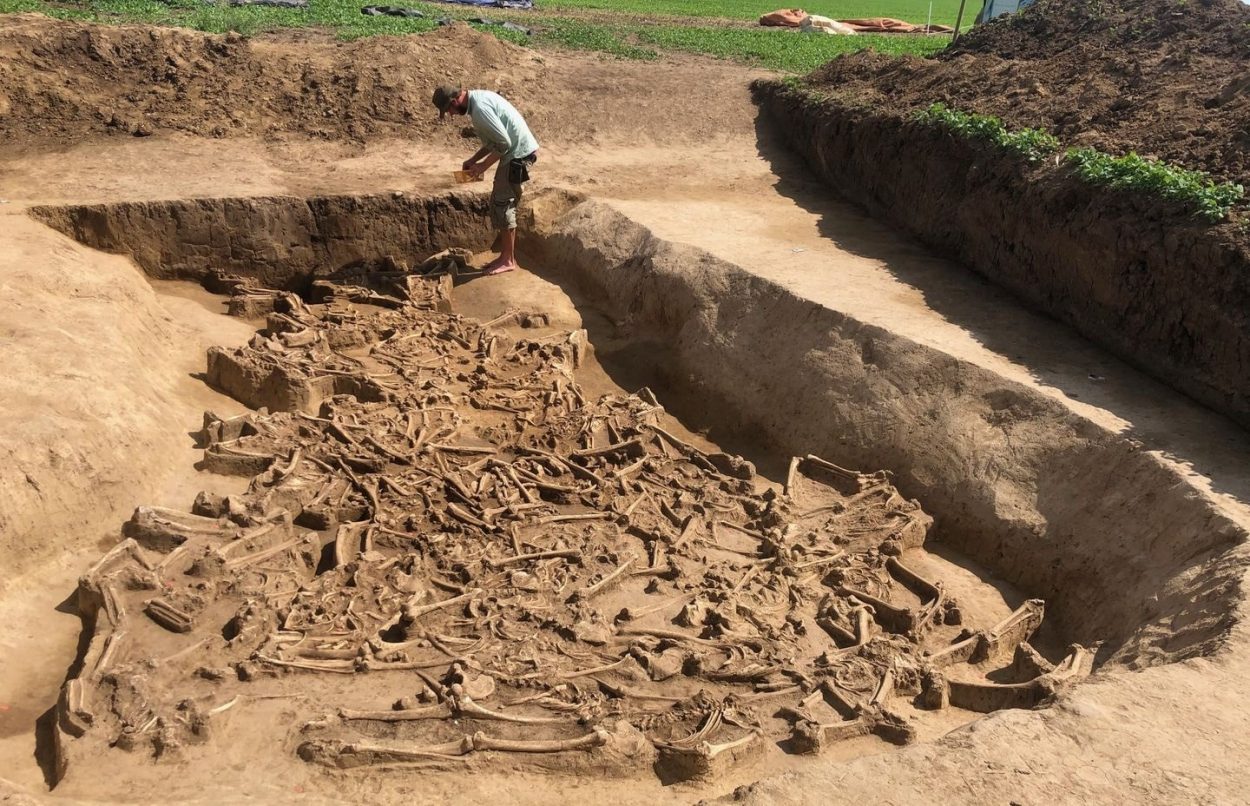Archaeologists have found a mass grave site in Vráble, Slovakia, containing 38 burials who were decapitated.
Excavations were conducted by a team from the Collaborative Research Centre (CRC) at Kiel University (CAU), and the Archaeological Institute of the Slovak Academy of Sciences, which have been conducting research on the site of Vráble-Ve`lke Lehemby, one the largest Early Neolithic settlements in Central Europe.
Vráble-Ve`lke Lehemby was occupied between 5,250 to 4,950 BC, comprising of 313 houses in three neighbouring villages. The south-western of the three settlements was surrounded by a 1.3 km-long double ditch that likely served as boundary marker rather than serving any defensive purpose.
Archaeologists excavating the ditch have found 38 individuals in what appears to be a mass grave within an area of 15 square metres.
Except for the remains of a young child, all of the deceased appears to have been decapitated, adding to several other burials of decapitated remains discovered in 2021 nearby.
Martin Furholt from CAU said: “In mass graves with an unclear positioning, the identification of an individual is usually based on the skull, so for us this year’s find represents a particularly challenging excavation situation.”
The discovery raises many questions. Several bones out of their anatomical position suggest that the already-skeletonised bodies were pushed into the middle of the trench to make room for new ones. Some skeleton also have the first cervical vertebra preserved, indication that the head was carefully removed, rather than a rushed violent action.
“It may seem obvious to assume a massacre with human sacrifices, perhaps even in connection with magical or religious ideas. Warlike conflicts may also play a role, for example, conflicts between village communities, or even within this large settlement. Did these people fall victim to head-hunters, or did their fellow villagers practise a special death cult that had nothing to do with interpersonal violence?” says project leader Dr Maria Wunderlich.
Header Image Credit : Prof. Dr. Martin Furholt – Archaeology/Kiel University







